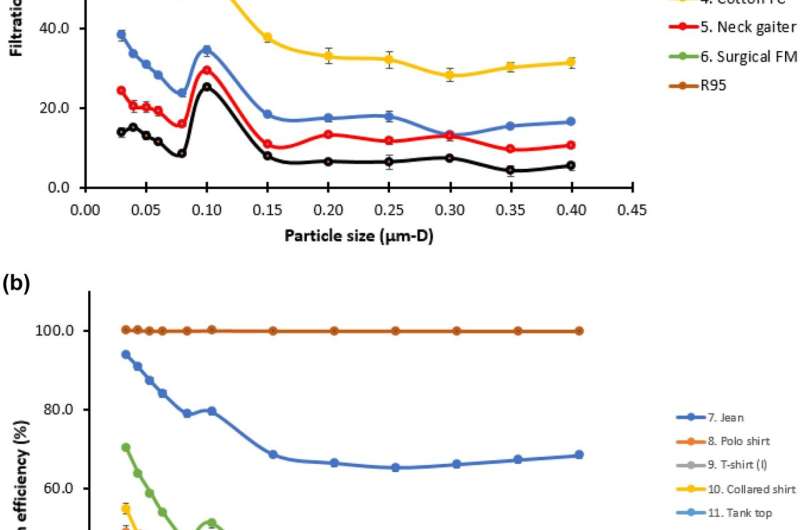In the absence of N95 masks, multi-layered face masks with proper fit offer protection against omicron

As the omicron variant surges, the Centers for Disease Control and Prevention (CDC) is expected to issue more robust mask guidelines to help curb COVID-19 transmission. During personal protective equipment (PPE) shortages, it has been necessary for people to utilize materials already at their disposal to craft their own face masks.
Seshadri Ramkumar, a professor of chemical countermeasures and advanced materials in Texas Tech University's Department of Environmental Toxicology, has co-authored a study utilizing standardized methods to evaluate common household fabrics as alternative materials for barrier face coverings. Olukayode James Ayodeji, a Ph.D. candidate in the Department of Environmental Toxicology, conducted the standardized tests measuring the filtration efficiency (FE) of different facial coverings.
Using mask filtration testing standards developed by the American Society for Testing and Materials (ASTM), Ramkumar and his team compared the performance of popular ready-made facial coverings, such as bandanas and neck gaiters, to alternative household materials including denim, cotton shirts, bedding and towels. Both categories of materials were measured against R95 masks, which offer the highest level of protection against viral particles.
While a material's ability to filter out viral particles is paramount, breathability is an equally important consideration, Ramkumar said. Unfortunately, testing revealed an inverse relationship between filtration efficiency (FE) and breathability—for instance, while denim showed the highest FE, it also had the lowest breathability of all the household fabrics, rendering it unsuitable for face mask production. Ramkumar and his team took both parameters of FE and breathability into equal account when evaluating a material's overall performance.
According to their study, the most effective ready-made facial coverings on the market are Velcro masks with carbon filters and surgical masks, while the least effective are fashion face masks, single-layer face coverings, neck gaiters and bandanas.
The highest-performing household materials were thick cotton shirts and towels, indicating that multi-layered cotton facial coverings with proper fit are the most effective homemade mask alternative because they offer a measure of protection against viral particles without compromising breathability.
A combinatorial approach involving both a facial covering and a surgical mask with good fit would offer the wearer better protection against particle inhalation, Ramkumar said.
More information: Olukayode James Ayodeji et al, Particle-Size-Dependent Filtration Efficiency, Breathability, and Flow Resistance of Face Coverings and Common Household Fabrics Used for Face Masks During the COVID-19 Pandemic, International Journal of Environmental Research (2022). DOI: 10.1007/s41742-021-00390-6




















